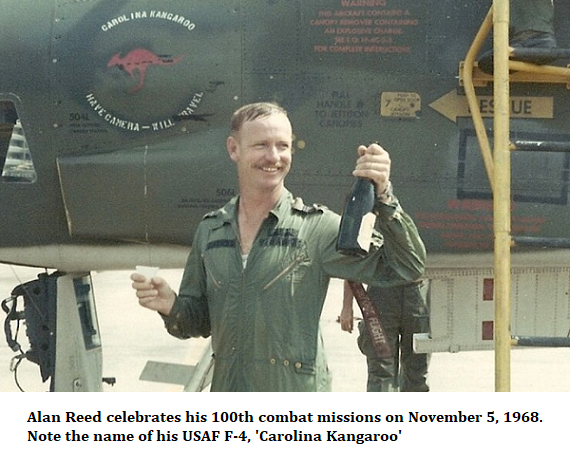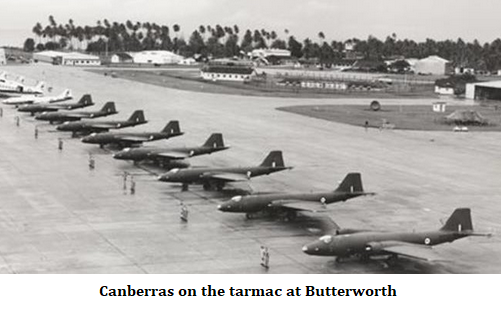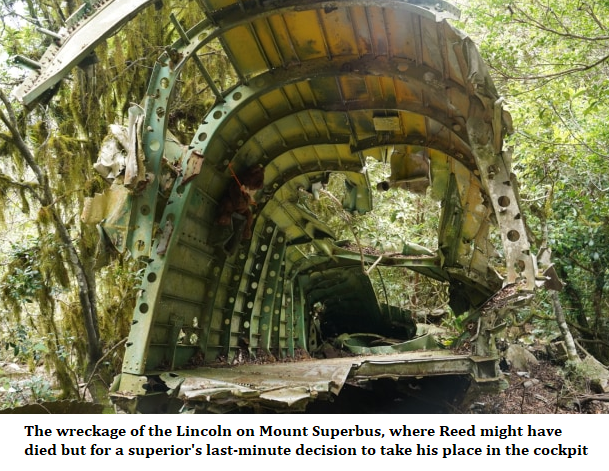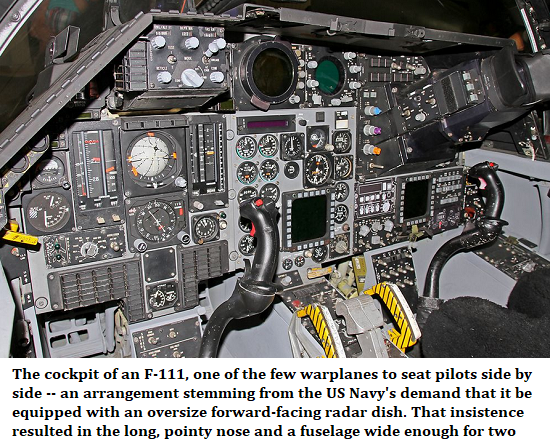
Invited to a War is Air Vice-Marshal Alan Reed’s memoirs of a 37-year RAAF career, spanning what he calls “a fortunate life”. The war was Vietnam and the “invitation” was from the US government.
Reed, now 87, retired in 1990, but in 1967 he was on exchange and training USAF pilots in Phantom fighter-bomber reconnaissance roles. He felt inadequate without Vietnam experience but the Pentagon couldn’t order a foreign national to go. Hence the “invitation” to which Reed responded, in effect, “Yes, please”.
On his first night bunking down at Tan Son Nhut airbase with his “Blackbirds” group, the Viet Cong sent in a rocket salvo, burning a C130 transport. Kitted with his shoulder-patch “Alone Unarmed and Unafraid”, he was told that over-flying Cambodia was taboo but by omission, it was OK to over-fly North Vietnam and Laos, where the locals were known to skin captured pilots alive.
He did ten “out-country” sorties, winning two Distinguished Flying Crosses. The first was for photographing a surface-to-air missile site under construction and heavily defended. The citation said, “Despite intense and accurate automatic weapons fire and antiaircraft artillery fire, he made multiple passes over his target to ensure complete photographic coverage.” The second DFC was for spotting a Phantom crash site. A total of some 761 Phantoms — US Air Force, Navy and Marines — were lost during the war. In one loss in Reed’s group, Major General Bob Worley was consumed by fire before he could eject, becoming the only USAF General lost in combat.
 In contrast, Reed was always lucky. He was one of 13 pilots graduating from No 13 Course at Archerfield base, Qld, in 1954. Against the odds, none died in action. Curiously, Reed’s steed was the only Wirraway ever to shoot down a Japanese Zero – by Pilot John Archer above Gona in 1942.
In contrast, Reed was always lucky. He was one of 13 pilots graduating from No 13 Course at Archerfield base, Qld, in 1954. Against the odds, none died in action. Curiously, Reed’s steed was the only Wirraway ever to shoot down a Japanese Zero – by Pilot John Archer above Gona in 1942.
On Good Friday 1955 Reed was rostered second pilot for a Lincoln bomber making a midnight dash from Townsville to Brisbane with a blue baby and nurse. He did the pre-flight checks and strapped in the bassinet, but then was ‘bumped’ by a squadron leader keen to visit Brisbane. Reed declined an offer to sit in the back of the plane. The skipper mistook Toowoomba’s lights for Brisbane and all died in the crash 100ft below the top of Mt Superbus.
Later, flying an F111 at Mach 2.4 or 3000km an hour, an intake vent problem caused an engine to stall and surge. It felt like he’d hit a brick wall, but he was able to regain control. (The F-111’s top speed was Mach 2.5). His nearest-miss, ironically, was in retirement as co-pilot of a Tiger Moth in peaceful Wooloomanata, near Lara, Victoria. The pilot stalled the left wing at 50 feet and Reed grabbed control a second before the plane was about to cartwheel into the dirt. Strangely he’d learnt the “unload to live” manoeuvre flying a Phantom.
His career ranged from command of Australia’s No 6 Phantom squadron to leading our first F-111 squadron at Amberley and high-level staff work. Indeed he signed the RAAF’s final recommendation for F-111s rather than more Phantoms, against spirited opposition from Russell Offices. Later an F-111 pilot sent a recalcitrant deputy secretary an F-111 photo with the bureaucrat’s office window marked with target cross-hairs. F-111 “Pigs” or “Aardvarks” served Australia well from 1973 to 2010.

With some trepidation, Reed included in his book his flights photographing Indonesian air bases during “Konfrontasi” in 1959-60. It was also 1960, when Russians caught spy pilot Gary Powers after downing his U2 with a missile the Americans didn’t believe was capable of reaching such a high-flier. The big risk was from contrails alerting MIG15s and 17s. Reed’s role as “Little Reed” was to fly half a mile behind the lead bomber piloted by “Big Read” – Group Captain Charles Read – and alert him with VHF “clicks” to switch altitude if contrails formed.
The pair of intruders avoided Java but inspected bases at islands including Ambon, the Celebes, and Lombok. Reed doesn’t know if they were detected. At the time he was sanitising his logbook with official cover stories about “contrail research” so he’s short on remembered detail. Reed and Read were awarded Queen’s Commendations, without specifics mentioned. Today Reed thinks his memoirs are the first public disclosure.

Two years’ later Reed’s flight of five Butterworth-based Canberras had just finished war games with USAF F-100 Super Sabres when the Cuban missile crisis hit. Reed writes that the same F-100 base-buddies were on the tarmac readying for a one-way flight to China with a nuclear weapon apiece.
His Biggles-like yarns are a constant delight. In a 1980 war game, his F-111s’ job was to hit the carriers USS Constellation and HMAS Melbourne before their planes could attack Hawaii. The “Pigs” dealt with HMAS Melbourne but the formidable Constellation, with its 80 interceptors and two Hawkeye early-warning aircraft, was coming in undetected from the north, with more strike-power than the whole Australian Defence Force. When it was spotted, the admiral in Hawaii ordered Reed to attack it with four F-111s – suicidal against the carrier’s radar coverage and F-14 defenders. Weirdly, still without opposition 200 miles from target, the F-111s split up and at 100 feet, surged over the carrier from the four points of the compass at 600 knots. It turned out that one of the carrier’s two Hawkeyes had just landed with a fault, and the second hadn’t yet taken off. Next day, with both Hawkeyes vigilant, Reed was once more coming in at 100ft when a defending F-14 streaked underneath him and pulled up ahead in a victory roll.

Reed has no embarrassment recounting his early love life – they called the Townsville nurses’ quarters “the bulk store”. With superb candour he relates how he teetered on a third-floor balcony to jemmy the shutters of his irate wife’s locked bedroom at Butterworth. Instead he fell off and broke two arms, one wrist and pelvis, and when just recovered and running Point Cook, got his sound left leg broken playing rugby.
His ultimate embarrassment was in the late 1980s at Laverton, between Melbourne and Geelong, when taking a lady on a joy flight in an antique Tiger Moth. He’d misjudged his fuel, the engine cut out and he glided to a landing in the Werribee sewage farm. They were rescued by old lag with a rowboat. Reed and his PR flacks managed to hide from the curious media that an Air Vice-Marshal was the shitty pilot.
Invited to a War
Air Vice-Marshall Alan Reed.
Altech International 2020, 314pp.
Amazon $43.73
Tony Thomas’s new book, Come To Think Of It – essays to tickle the brain, is available here as a book ($34.95) or an e-book ($14.95)
 Sign In
Sign In 0 Items (
0 Items ( Search
Search










What an fascinating life of active service. Hate to pick you up on a pedantic point Tony but Konfrontasi was between 1963 and 1966. I know this because my father was the Met Officer at Butterworth air base during this time and we Aussie kids were evacuated from the RAAF School Penang one morning under threat of a bomb having been planted in the school. Turned out to be a hoax.
Always good to hear of the exploits of outstanding members of the Australian military.
For many generations now, they have done excellent work, and made many sacrifices on behalf of Australia and Western Civ generally.
Now the Left is now working hard to feminise the ADF and emasculate it.
And advancing mightily in this regard -see the current assaults by the marxist/ people and agents of Islam and China on the SASR and the Commando Regiment, and members thereof.
Of course, the present greatest threats to Australia is here at home -by way of infiltration of all of our institutions by agents of various anti-Western foreign and transnational political forces.
And of homefront warriors who might resist and destroy these internal enemies, there are precious few.
Maybe none.
Peter, pedants don’t hate what they do, they enjoy it immensely 🙂
I’ve checked the book, it is curious because according to Alan Reed, he got a medal for the overflights in 1960. Either he’s made a date mistake, or stuff was going on pre-1960 that we don’t know about:
“While we photographed several airfields, I did not get to see the photographs in detail so I am not sure what we actually found. Thankfully, no Migs were sighted and I am not even sure whether any of our flights were ever detected. Naturally, my log book refers to these missions as contrail research so that is why I am a bit vague about the details. I am sure that a few people at
109
PROOF
Darwin and in our squadron realised that there was something funny going on when Big Read and Little Reed went off together to Darwin for several days at a time. After one of these operations, Frank and I delivered the film to the intelligence centre at the barn in Canberra. The barn was a photographic interpretation centre built during the war to actually look like a barn on what was allegedly a farm not far from the Fairbairn Air Force Base. In recognition of our work on this task, but without formal acknowledgment, Frank and I were both awarded the Queens Commendation for Valuable Service in the Air in the 1960 Queens Birthday Honours List: so much for my venture into the arcane world of intelligence gathering.”
Following that very embarrassing Tiger Moth“landing” at the sewerage farm, Alan was summoned to appear before the the Department of Civil Aviation’s Examiner of Airmen who took delight in tearing strips off Alan.It appears to have bee a great opportunity for “payback
“ for a roasting handed out by Alan , to that Examiner, when the Examiner was in the RAAF serving under Alan.
Alan Reed would no longer be welcome in the ADF as he is not woke
Alan Reid was an excellent pilot but not so good as a public speaker. I remember a dining in night at the RAAF Point Cook officers’ mess around 40 years ago when he delivered a spectacularly boring after-dinner address. He was followed by the guest of honour, a senior RAF officer, who earned an enthusiastic round of applause by thanking Alan for reminding him of the first principle of public speaking … (long pause) … brevity.
Far beyond breathtaking!
Main questions re warriors today:
1. Are producing enough of ’em?
2. Who are the anti-citizens of Australia who are demonising our warriors and the ADF generally?
3. Can these -and all anti-citizens- be contained in a small space, if not eliminated?
4. Actually, the main war today is here at home, in all of our institutions-
-is there a critical mass of proper citizens who would support/push the right kinds of politicians to deploy the right kinds of warriors to defeat our many internal enemies -home-grown and imported- of the Proper Australia that is worth fighting for?